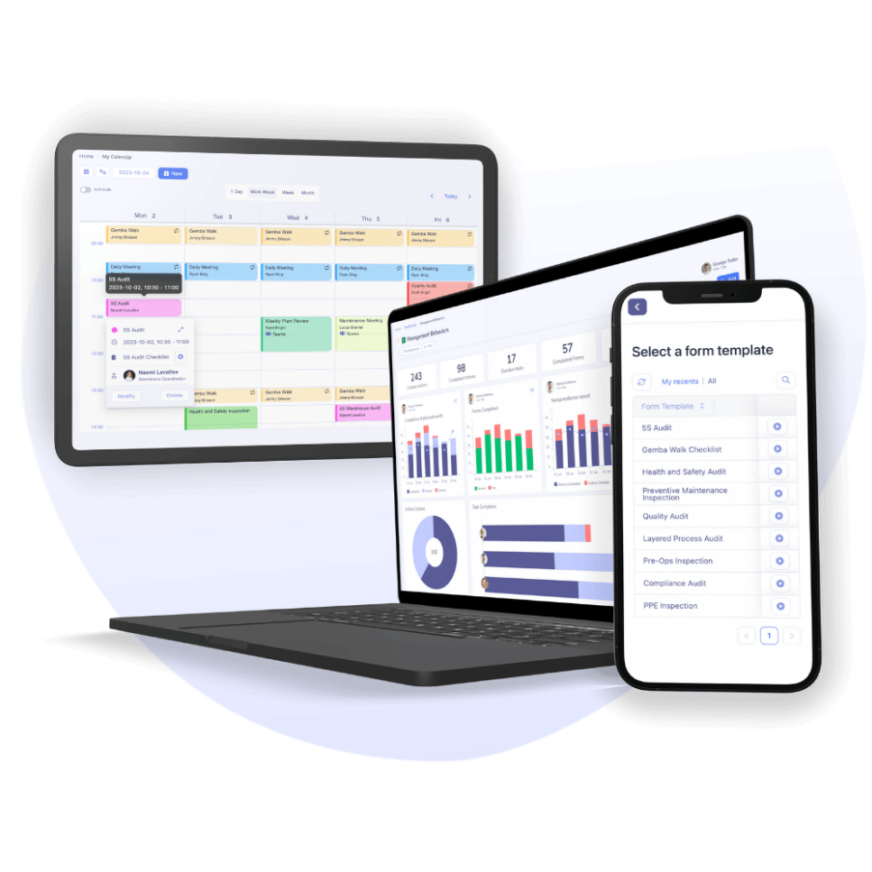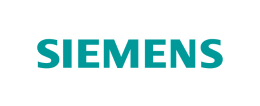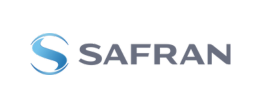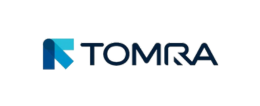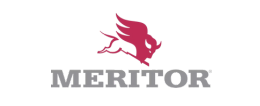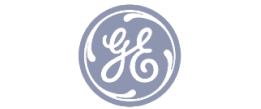Digitally Supported Preventive EHS and Workplace Safety

| Last updated: | February 4, 2025 |
As a response to new health & safety risks and requirements, organizations have rapidly deployed measures to maintain a safe and compliant workplace while supporting daily operations. The pressure of the Covid situation has created a strong increase of digital initiatives in businesses. Many EHS managers set up connected tools to manage safety as part of the daily management of operations.

The Challenges of Deploying a Sustainable EHS Process:
- Rarely consulted safety procedures and policies;
- Difficulty to involve employees in the identification of risks and hazards;
- Low ownership or accountability of supervisors in periodic inspections;
- Difficulty to manage, transcribe and share safety issue data;
- Difficulty following-up on corrective actions;
- Difficulty to measure EHS standard performance;
- Disconnection between the safety management and the management of operations.
How are tools and standardized processes essential?
Organizations streamline practices with standardized processes to identify risks in the workplace and provide corrective actions. The tools supporting EHS practices help improve employees’ commitment to maintain a safe work environment on a daily basis. The prevention process increases accountability and engages everyone with a stronger adherence toward risk awareness and measures.
Centralized Health & Safety Practices in the Workplace
EHS process aims to facilitate and maintain a safer work environment by centralizing safety practices. Digitally supported EHS empowers the workforce and the managers to:
Deploy and share standards
- Share internal policies and standards.
- Train and raise awareness around preventive measures.
- Standardize supervision and inspections.
Identify safety risks and issues
- Supervise and manage safety practices.
- Inspect and identify operational risks, hazards, incidents, or near misses.
- Document safety issues.
- Transfer issues to the stakeholder or safety manager.
Share and handle safety risks or issues
- Handle risks, hazards, and incidents.
- Engage stakeholders to speed up corrections.
- Deploy sustainable preventive measures.
- Follow-up on corrective actions.
Analyze and streamline your safety performance
- Analyze risks and safety hazard observations.
- Tack adherence and performance against your EHS standards.
- Improve safety control: inspections, supervision, training program, procedures updates, and more.
Health & Safety Performed Digitally with Tervene
Tervene equips teams to support the operation control on a daily basis while committing everyone to stronger safety processes.
Sharing Safety Policies and EHS Preventive Measures
Organizations digitally document and share safety procedures and policies, making it easier to update and access standards. The safety manager can digitize hygiene and sanitary procedures, safety operating procedures, internal policies, training programs, PPE requirements, and more.
Manufacturers’ Case Study: Marquis Books Printing Team shared new internal procedures and policies to deploy sanitary guidelines under COVID-19 period.
Identifying Risks and Issues Related to Workplace Health and Safety
Preventive Inspections (safety audits)
Preventive inspections help improve compliance to any standards, processes, and expected safety behaviours. With digital forms, safety managers standardize forms to inspect PPE requirements, 5S compliance, work environment, equipment safety usage. The auditor performs rigorous inspections with the latest version of a form and documents non-compliance with pictures and comments.

Daily Checks (Gemba Walks or Safety Walks)
Team leaders and frontline managers usually supervise safety requirements as part of their responsibility. To standardize daily checks and increase accountability, a supervisor could validate the environment and behaviour safety in his proactive daily Gemba walks.
Most of the time, checklists for daily operations also include a safety validation to identify discrepancies against standards, such as PPE requirements. In other cases, a Gemba walk might consist only of safety checks.
Risks and Hazards Reported by the Frontline Workforce
Frontline workers encounter direct issues relating to safety. If they are well equipped, they could quickly report and assign risks and hazards they come in contact with. Also, they could complete an incident report with detailed comments and event descriptions.
Observations, Incident/Accident, Near-Miss’ Forms
Safety managers could build forms with various question types. It standardizes how employees or a team leader will describe and document a safety issue, incident or hazard. Documenting events rapidly on the site of the event provides all the context needed to improve safety control afterward.
Managing Non-Conformities and Risks
Through increased mobility, teams structure collaboration and accelerate problem-solving. Employees categorize and document issues on the factory floor, allowing process owners to define corrective actions with task assignments, action plans, or quick transfer into daily/weekly meetings. That way, safety managers deploy and follow-up corrective actions while maintaining control.
Safety Meetings and EHS Committee
Organizations commonly hold EHS Committees to structure employee-employer communication and ensure follow-up on safety management. Whether meetings are done remotely or in person, the committee usually collaborates through a meeting agenda. With digital meetings, risks, hazards, or incidents raised on the field feed the agenda. Also, participants can add any discussion points as well to ensure proper preparation.
Manufacturer’ Case Study: Marquis’ factories held a new hygiene and sanitation (EHS) committee in 2020, bringing together senior management of three factories.
Tracking Process Performance and Improving Safety Control
Safety managers remotely access reports and information on audits, nonconformities, safety issues, and corrective actions progress. Digital platforms provide visibility and traceability on data to sustain safety control: inspection forms and frequencies, validation questions in daily checks, training program, and safety procedures updates.

Deploying COVID-19 Safety Measures while Supporting Daily Operations
Manufacturing managers continue to operate with most significant concern for health & safety measures: remote support teams, distancing requirements, sanitary procedures, risks, and more. The benefits of digital platforms are even more noticeable when better visibility on information helps reduce contacts and stay safe.
Read about the 12 challenges with which Tervene helps businesses’ daily operations while maintaining a safe and sanitary workplace during COVID-19.
Why do EHS Managers take part in the digital transition?
Paper-based methods and disconnected tools generally require a lot of data transcription. EHS Managers digitalize the process to support safety management more efficiently. Let’s compare:
With traditional methods and tools: Preventive and safety operating procedures reside in rarely consulted – difficult to update manuals. Paper-based inspections increase the administrative workload. In the long term, the problems with transcription and visibility may decrease adherence and sustainability to a safety management process. Thus, questions might remain: When did the last inspection occur? Is the workplace currently conform to standards? What are the risks, incidents, or hazards that have been identified and at which work unit, line, or department? What are the corrective actions?
With a connected system: The workforce and managers easily access digital work procedures and EHS policies. All teams engage in a safer work environment through daily operations. Tools provide employees with faster methods to identify and document safety issues. Safety managers gain visibility on risks for investigation purposes. Finally, they deploy sustainable corrective and controlled actions preventing hazards in the future.
About Tervene
Tervene is the connected platform that supports daily operations control by empowering frontline teams and deploying stronger management processes.




